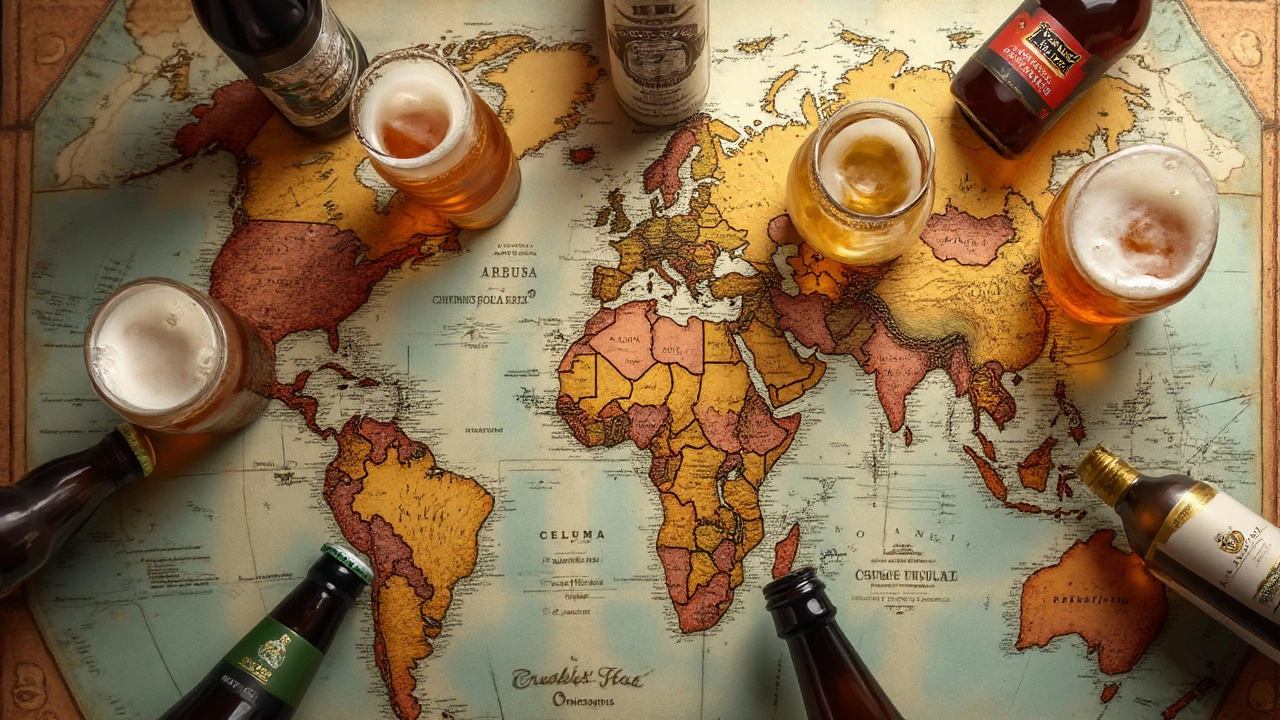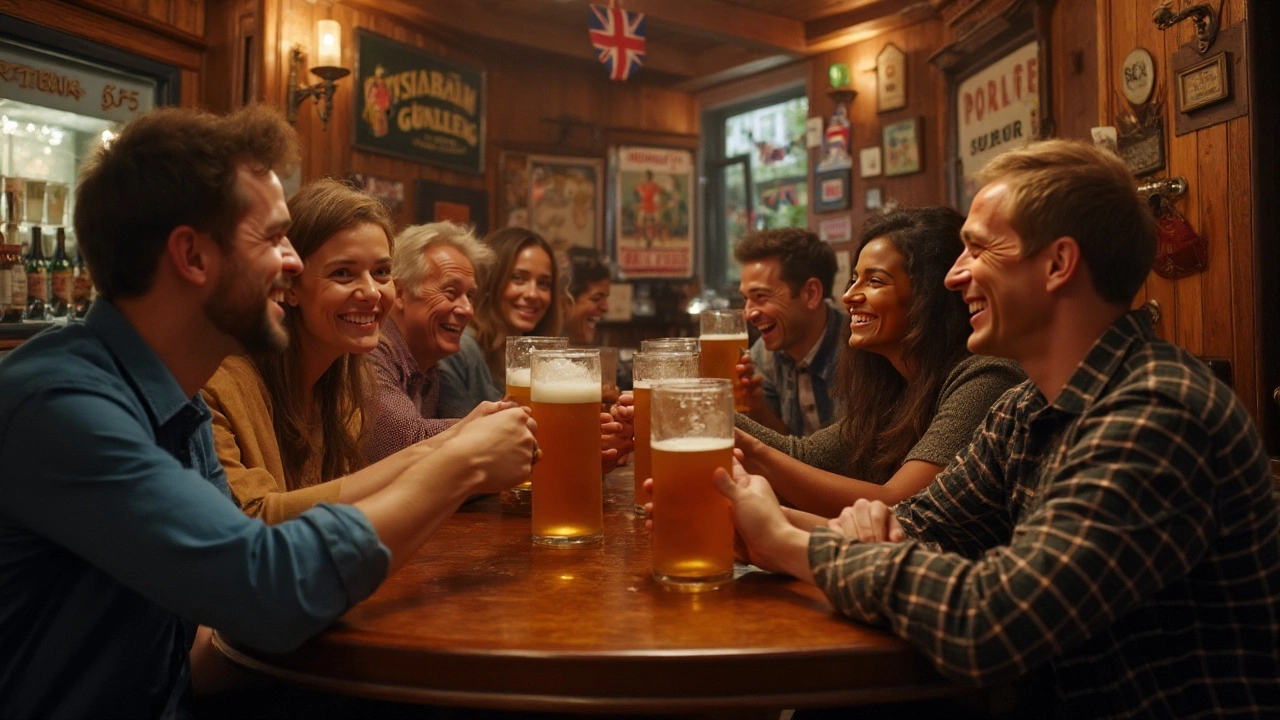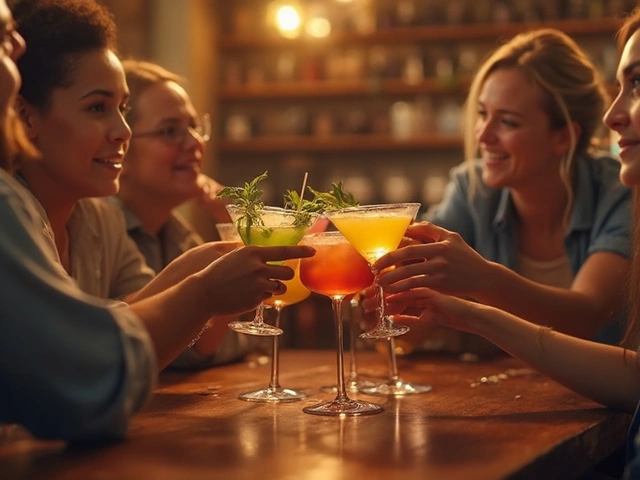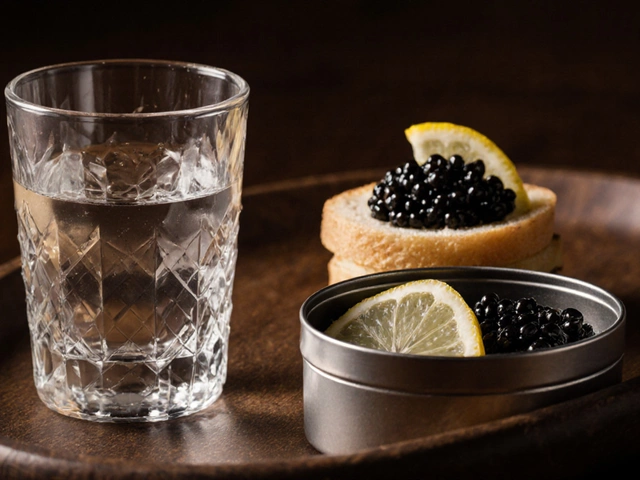Ever wondered if there really is a single beer that rules the world? Sounds almost impossible, right? With thousands of breweries and endless styles, you'd think the answer would change every other week. But some beers break through the noise and become legends. Ratings, awards, and fans worldwide chase after just a handful. This isn’t about some random top-ten list. No, we’re grabbing a cold one and getting straight into what makes the number one beer in the world—and why people lose their minds trying to find it.
How Beer Rankings Work Around the Globe
If you ask ten people about the best beer, you’ll get ten very different answers. What makes a beer "the best"? Well, there’s no official international ruler for that. But there are powerful voices setting the pace. Let’s start with the big hitters: RateBeer, BeerAdvocate, and Untappd. These aren’t your casual "Hey, I liked this IPA" spots. These sites crowdsource ratings from thousands of serious beer drinkers, then crunch the scores into global rankings. Every year, they announce lists for "World's Top Beer" or "Best Beer by Country." Who climbs to the top? It’s never just about price or booze level—it’s about flavor, tradition, and cult status.
Breweries fight to get their beers onto these lists. Some even send bottles across continents, hoping a lucky few will sip and rave online. In recent years, beers like Westvleteren 12, Pliny the Elder, and Heady Topper often battle it out for the crown. These names may not ring a bell for casual drinkers, but for beer geeks, they're like the holy grails of brewing. The numbers back it up. Westvleteren 12, for example, regularly lands perfect 100 scores, despite being impossible to find outside Belgium. Want the stats? Check out this real chart of recent top-ranked beers based on crowdsourced scores:
| Beer Name | Brewery | Country | Style | Average Rating (out of 5) |
|---|---|---|---|---|
| Westvleteren 12 (XII) | Brouwerij Westvleteren | Belgium | Quadrupel | 4.72 |
| Pliny the Elder | Russian River Brewing Co. | USA | Double IPA | 4.69 |
| The Alchemist Heady Topper | The Alchemist | USA | Imperial IPA | 4.67 |
| Goose Island Bourbon County Stout | Goose Island Beer Co. | USA | Imperial Stout | 4.65 |
| Trappistes Rochefort 10 | Brasserie de Rochefort | Belgium | Quadrupel | 4.62 |
Numbers don’t lie—beer nerds crowd around a few clear legends. But what is it about Westvleteren 12, in particular, that always keeps it at the top?
What Sets the Number One Beer Apart
Let’s stop teasing: according to thousands of critics and passionate drinkers worldwide, Westvleteren 12, brewed by Trappist monks in Belgium, is almost always crowned as the world’s best beer. Here’s the weird part—it’s incredibly hard to get. The monks don’t advertise, don’t export, and you can’t waltz into a store to grab a bottle. Want one? You book through a secretive phone line, sometimes waiting months, and drive to the abbey with a license plate registered in their system. It’s a beer you literally have to quest for. People call it “the unicorn of beer.”
Does the taste live up to the legend? Westvleteren 12 pours dark brown, almost looking like cola but with a creamy, tan foam. The aroma bursts with chocolate, figs, caramel, and this spicy, boozy kick—it grabs your nose in a way boring lagers never could. Sip it slowly and you’ll get dried dark fruit, toffee, and this rich, warming finish. People say the flavor keeps changing as you drink, revealing new notes every minute. No wonder it’s been called "liquid gold."
But it’s not just the taste or scarcity. There’s old-school magic at play. The monks have been brewing here since 1838—and they still refuse to let profit dictate their mission. No Facebook ads, no flashy bottles. Everything is small-batch, unfiltered, and handled with care that borders on obsessive. It’s beer made for community, not for quick cash. This soulful backstory matters. When you finally track down Westvleteren 12, it feels like more than just a drink. It’s an experience—a ticket to something way bigger than yourself.
If you dig into “best beer” awards, Westvleteren 12 almost always snags top spots. At global competitions and among fans on sites like BeerAdvocate, this beer’s got more five-star ratings than most breweries could ever hope for. Even its closest rivals—like Pliny the Elder, Heady Topper, or Trappistes Rochefort 10—are easier to grab. That combination of taste, history, and mystique is what keeps Westvleteren 12 at number one.

The Breweries and Stories Behind Legendary Beers
People always want to know: Who actually makes these world-famous beers, and what’s their secret sauce? Let’s peel the label back. The Abbey of Saint Sixtus in Westvleteren is run by just a handful of monks. They only brew enough Westvleteren 12 to keep the abbey running and support local charities around Belgium. You won’t see them chasing profits or expanding production into mega-factories. Every bottle comes in plain brown glass—no label, just a cap with the name and batch number. Feels like beer made for friends, not mass markets.
The community around Westvleteren 12 is part of what makes it special. You’ll spot true beer geeks planning road trips to the abbey, swapping stories about their journeys, and sharing their first sips like proud parents showing off baby photos. There’s something cool about a product built on trust and honesty. The monks even ask people not to resell the beer, sticking to the idea that beer should bring people together, not just fatten someone’s wallet.
If you look at the competition—Pliny the Elder (from Russian River Brewing) or Heady Topper (from The Alchemist)—they also have wild stories. Pliny the Elder, for example, started as a tiny California experiment, inventing a new kind of hoppy, bitter beer (the double IPA) way before it became a trend. Still, they keep the batches pretty limited. Heady Topper, from Vermont, kicked off the craze for hazy IPAs but refuses to ship outside the region. There’s a pattern: the beers at the top are rarely the ones sold in every supermarket. They’re small, independent, fiercely protected—almost like a secret handshake among serious fans.
The backstory matters as much as the brew. For plenty of drinkers, it’s about the hunt, the people you meet along the way, the little victories when you finally grab a bottle that most people only read about in blogs. That’s a big reason why ratings stay so high and stories turn legendary. It’s never just a beer—these are journeys in a glass.
How to Taste the Best Beers: Tips and Surprises
So you want to taste the top number one beer in the world? Here’s what you need to know before you pour. Westvleteren 12 and most world-class beers are about the experience as much as the flavor. You won’t enjoy it if you down it ice-cold, straight from the bottle. Here are some tips to catch every nuance:
- Best beer in the world is best enjoyed between 12°C and 15°C (about 54-59°F). Below that, you lose most of the subtle flavors. Let it sit for a minute, then sip slowly.
- Use a stemmed glass—your hands will gently warm the beer and release complex aromas. Those old monks know what they’re doing with chalice-style glasses.
- Pour carefully. Legendary beers are usually bottle-conditioned, meaning there’s live yeast in the bottom. A slow, steady pour leaves the cloudier part last. Some people like the yeast; others skip it.
- Take your time with the aroma first. Swirl, sniff, repeat. Notice dark fruit, caramel, and little spicy touches before you ever taste it.
- First sip—small. World-class beers change and open up as they warm. Jot down your impressions as the flavor develops.
Expect a surprise: These beers often taste nothing like mass-market lagers. Some are thick, boozy, or deeply sweet. Don’t expect a light and bubbly flavor profile; there’s a reason these beers are sipped, not chugged. If it's Westvleteren 12, you’ll notice layers of raisins, figs, nuts, caramel, coffee, maybe even a flash of banana. If that sounds weird for a beer, just remember—this is the stuff that makes "number one" beers unforgettable.
What if you can’t get your hands on Westvleteren 12? Don’t worry. Plenty of beers capture the same spirit. Go for Trappist ales like Rochefort 10, or grab an American classic like Pliny the Elder or Goose Island’s Bourbon County Stout. Check beer forums—sometimes superfans arrange bottle trades or share local finds. Even if you never drink "the one," you’ll find plenty of stunners along the way.
If you're getting serious, track down local specialty bottle shops or bars known for rare imports. Follow breweries and fans on social media—they’ll drop hints when a shipment lands. And always keep an open mind. Try something new, even if the label looks plain or the style sounds strange. Sometimes the best beer is the one you least expect.


